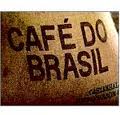Brazilian Coffee - 5 Reasons Why It's So Good

Brazilian coffee proves that not all coffee options are the same. There is a distinct level of quality and with coffee from Brazil, this is probably due to the fact that Brazil just so happens to be the largest producer of coffee in the entire world. Between the various harvesting methods, low acidity, dry processing methods, direct marketing and 3 rich growing areas, it is no wonder that Brazil coffee is as popular as it is.
Different Harvesting Methods
Unlike in many other places, the fruit that is removed from the coffee bean is done so through the use of four various processing methods. In fact, it is rather common to find a single farm using all four methods throughout one harvest. This ensures quality and variety.
Lower Acidity
Having a coffee that has high acidity is not a good thing, at least, not according to the taste buds. When it's grown in the lower altitudes like it is in Brazil, the coffee will then have low acidity. Because of all of this, the coffee beans will be sweet, round and will provide an excellent taste.
Dry Processed
The Brazilian coffee that you are normally going to find in the specialty coffee shops will be coffee that was dry processed. This means that it has been dried from inside the fruit first. This will ensure that much of the sweetness of its fruit will carry on over into the cup. The dry processing is also coined "natural" as some farmers will allow it to dry on the trees first, instead of picking them right away.
Directly Marketed Coffee From Farms
Thankfully, a few years ago, the Brazilian government deregulated the entire coffee industry there. This allowed the larger farms the chance to market directly to the countries consuming their coffee, without having to worry about the grading structures that would have been mandated by the government.
3 Main Growing Regions
The three main Brazilian growing areas will some of the best top-end coffees to be grown. The oldest growing area is that of Mogiana and it sit along the Sao Paulo and Minas Gerais borders. This is a growing area that is known for the rich red soil, which produces full, sweet and rounded coffees. Then there is the Sul Minas rolling hills, which is the heart of coffee country in Brazil. The newest growing area would be that of the Cerrado, which is a semi-arid plateau that surrounds Patrocinio city.